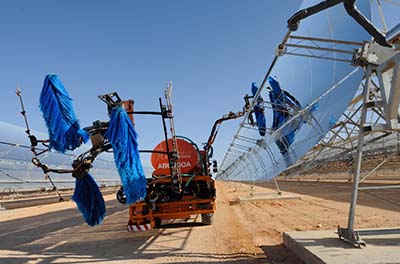Learning from Successful Experiences in Developing Large Scale Concentrated Solar Power in Morocco and Egypt

Summary
Beneficiaries / Participants
Moving forward
After the Chinese delegation visited Morocco’s and Egypt’s solar projects and met with key representatives involved in the work, the members developed a better knowledge and understanding of this type of project’s physical construction and operation. They also learned that CSP is a stable power source, and that grid companies tend to accept electricity from solar power without the difficulties faced by other renewable energy sources. Representatives from various ministries and policy research institutes also learned how their counterparts in Egypt and Morocco developed the appropriate legal and policy frameworks and incentives to support the scale-up of their solar efforts.

 China
China Colombia
Colombia Denmark
Denmark India
India Indonesia
Indonesia Mexico
Mexico Russian Federation
Russian Federation Spain
Spain United Kingdom
United Kingdom